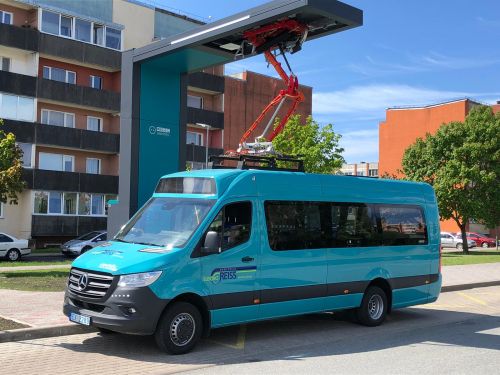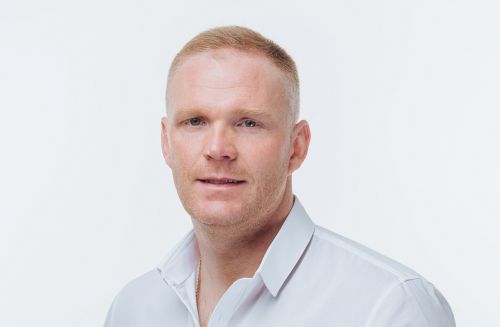Latvia has found a special way in electrifying its public transport. In addition to the purchase of large electric buses, trams or trolleybuses, the cities and regions of the Baltic country have decided to switch minibuses from diesel fuel to batteries. The Latvian company Electrify is helping to make this initiative a reality. For several years, it has been specialising in manufacturing electric minibuses (with a capacity of up to 22 passengers). COO and co-owner of the company, Agris Amoliņš, in an interview with the CFTS, talks about the features of the electrification of minibuses and why Latvia pays so much attention to this type of public transport.
The Electrify company is engaged in the production of electric minibuses. Why did you choose small-capacity buses?
It all started in 2016. Latvia received money from European funds for the development of public transport. Our country is small in terms of population, so most people live in small towns that use minibuses for public transport routes. One of the conditions for receiving this grant was the reduction of emissions into the atmosphere. Battery-powered minibuses were considered by Latvian cities as one of the tools on the way to this goal. The city of Ventspils initiated a procurement for the purchase of electric minibuses but none of the manufacturers could offer a suitable product.
That's why our company Electrify decided to make it by teaming up with two partners, also from Latvia – the Universal LTD company, which specialises in converting minibuses according to customer requirements, and Drive eO, which is engaged in the development of electric vehicles. As for large buses, there are major manufacturers in this market that offer large-capacity electric buses but minibuses do not.
Which type of minibus became the basis of your product?
For the development of the prototype, we took a Mercedes-Benz Sprinter diesel minibus. It has proven itself well on the city and intercity routes in Latvia. Another advantage of this model was homologation, this minibus was already certified for operation in the countries of the European Union. We just needed to make changes to this certification.
When did deliveries of the first electric minibuses begin?
At the end of 2017, we already had the first prototype ready, which we successfully tested under various conditions. Two years later, in 2019, we signed the first contract for the supply of 14 electric minibuses to Ventspils to run on the city routes. This project was interesting in that the customer demanded the minibus to be charged not from an outlet, as in ordinary electric cars, but with the help of a pantograph installed on the roof. We fulfilled this contract in 2021-2022.
The next city was Liepaja, where we delivered 6 minibuses in 2021, 3 more buses were sent to Riga. Currently, we are fulfilling a contract for supplying 10 minibuses for the Vidzeme region, they serve the intercity routes between the cities of Limbaži, Cesis and Sigulda with a length of about 50 km. At the moment, about 30 our minibuses run in Latvia.
Your electric minibuses serve both the city and intercity routes. What are the differences between those that run in the city and outside of it?
Minibuses, which run in the city, are equipped with a lower capacity battery. They can drive up to 100 km on a single charge but the batteries charge very quickly. The intercity buses can travel up to 200 km in winter and 250 km in summer on one charge.
Where and how is the charge of a minibus done?
Charging is carried out at the final stops in the intervals between disembarkation and boarding of passengers. For example, we built three charging stations in Ventspils.
Why exactly three?
This was a request of the customer. In the future, the city of Ventspils plans to completely replace its fleet of diesel minibuses with electric ones. Currently, there are 60 minibuses in the city, 14 of them are electric. Two stations would be enough for the full-fledged operation of 14 minibuses. On average, a minibus makes a circle of 20 km, and then charges. It takes five minutes to recharge for one circle.
How long does it take to fully charge the battery?
For normal operation of batteries, it is better to perform slow charging. There is a range from 20 to 80% that can be charged with very high power, this is the so-called fast charging technology. It takes about 15 minutes to recharge the battery, which is sufficient for a trip of 60 km.
The minibus battery is fully charged at night on a slow charge, which allows you to extend the life span of the battery. With slow charging, the battery can be charged for 100 km in 2.5-3 hours. It is better for the bus to be charged on slow charging, this is especially important in winter.
What are the specifics of charging minibuses on the intercity lines?
On average, our minibuses travel up to 400 km per day. It is about both the city and intercity routes. Those which run between cities do not require frequent charging of the battery as in the city. They can fully charge the battery within two hours. A minibus on the intercity routes must maintain an interval of 30-40 minutes between arrival at the final stop and departure from it. Therefore, its recharging takes place during this period.
Earlier you mentioned that the Ventspils minibuses have a pantograph. Only in this city?
Yes, only here. To be honest, the pantograph is not a cheap solution but it was the customer's request. In the future, they plan to purchase large electric buses, so the charging stations are also designed to work with large buses. In addition, a minibus can be charged faster with a pantograph than through an outlet.
In this regard, I have the following question. Can a minibus with a pantograph be charged from a trolleybus or tram contact network?
It is possible but many important nuances must be taken into account. The first one is the overhead wire network voltage (it is much higher for a trolleybus than that used to charge batteries in minibuses), the second is the type of current (alternating or direct). And the third important nuance is the power of the network. If a minibus is charged in one area, the trolleybus may not have enough power to drive. It's an interesting but complex idea. I know that a similar project was implemented in Czechia.
Let's talk about buses in more detail. Do you purchase ready-made diesel buses or do manufacturers supply you with vehicles without engines?
We would very much like to be supplied with minibuses without engines. We talked to Mercedes-Benz about this but they told us that it would be much more expensive for them to stop the assembly line. That's why we get fully equipped diesel minibuses, then we install batteries on them, and sell the engines to other companies.
This year we started working with original electric minibuses from Mercedes-Benz – Mercedes Benz eSprinter. This bus is nice but it can carry no more than 8 passengers, and its battery is only enough for 70 km. So we install an extra battery and also replace the rear axle so that it can carry up to 22 passengers.
Are you changing something in the cabin?
We make the salon from scratch because the diesel minibus comes to us from the factory as a freight one. Then we convert it into passenger following all applicable regulations.
How long does the process take?
The conversion of the interior takes about 3-4 weeks, and the installation of batteries and related components takes about 8 weeks.
Where does the conversion take place?
Everything happens in Latvia. The conversion of the salon takes place in Jelgava based on the former Riga Bus Fact ory (RAF). Now the production facilities of our partner Universal LTD are located there. Our other partner, Drive eO, is responsible for installing the batteries, their office is located in Ogre, near Riga. Previously, they produced electric racing cars, including those for the Paris-Dakar rally.
Where exactly are the batteries installed? In place of the engine?
Part of the battery system is installed in the place where the engine was, the other part is in the middle of the body, under the floor. This is necessary for weight distribution.
How many years can batteries be used on the city and intercity routes?
We provide a 7-year warranty. This warranty is given by the battery manufacturer. The manufacturer also provides recommendations on how to charge and use batteries. After the seven-year period, we also guarantee that the battery capacity will remain at least 80% of its original capacity.
What are the advantages of an electric minibus compared to a diesel one, apart from the level of emissions into the atmosphere?
Our minibuses have travelled more than 1 million km. Operating costs are quite low. The main thing is to charge the battery correctly. We also have subsidies for "green transport" to encourage cities to purchase ecological public transport.
If electric minibuses and electric buses become popular in Latvia, will the country have enough power system capacity?
This is a very good question. That's enough for now. But if we assume that most cities will suddenly start purchasing electric buses, then, of course, it will not be enough. This is a problem not only for Latvia but also for other countries, even Norway. Therefore, one of the alternatives can be hydrogen.
Are you planning to enter this market?
We have a hydrogen minibus project based on fuel cell technology. This is, in fact, the same electric minibus, but it receives energy from hydrogen fuel cells.
Is it already a prototype?
For now, this is only a project, it is not yet a finished product. But there are difficulties with hydrogen. First, the introduction of this fuel requires the creation of a gas station network. Hydrogen gas stations are already appearing in some European countries, but there are still very few of them. Second, the transportation and storage of hydrogen require maintaining the required temperature.
What are your plans for the coming years?
We are currently completing the order for 10 minibuses for the Vidzeme region. We are also planning new deliveries to Ventspils and other Latvian cities. Looking ahead, we are looking at the Scandinavian market. There, minibuses are also used on busy public transport routes, as well as for picking up schoolchildren, pensioners and people with reduced mobility. We managed to conclude the first contract with the Norwegian carrier Boreal. In addition, we are currently negotiating with several potential customers in Scandinavia.






